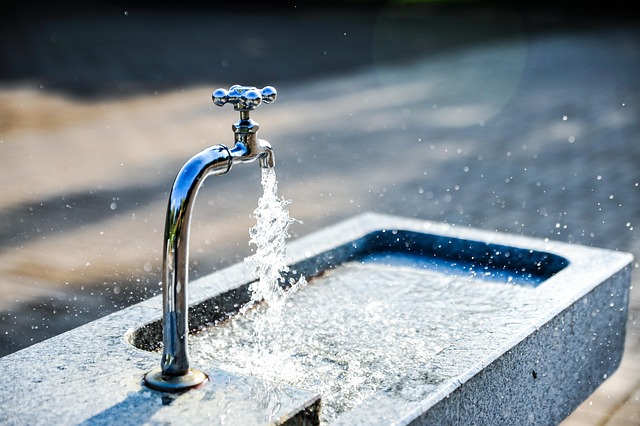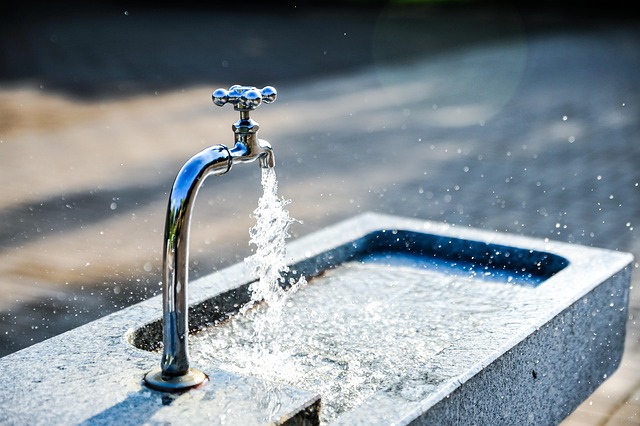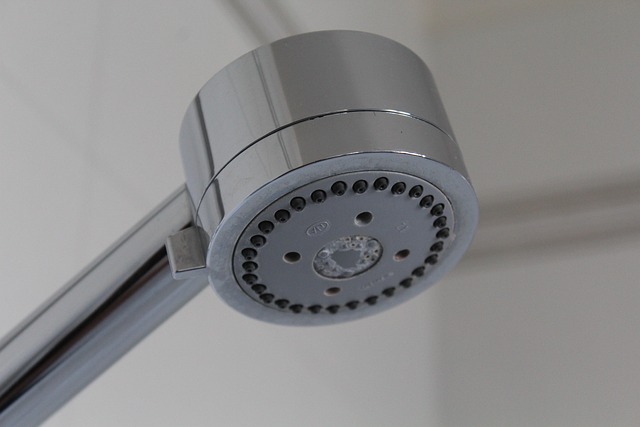Leaky faucets range from minor drips to severe floods, with root causes often involving worn O-rings or washers for occasional leaks and damaged parts for more severe ones. Specific repair methods are required based on faucet type, such as kitchen sink aerator replacement or bathroom cartridge swapping. Regular maintenance, like checking connections, prevents leaks and saves costs. DIY repairs involve gathering tools, shutting off water supply, disassembling the faucet, inspecting and replacing damaged parts, then reassembling and testing. Complex issues require professional plumbers for thorough repairs. Proactive measures include annual O-ring/aerator replacement, tightening connections, and applying waterproof sealants to prevent leaks. Effective troubleshooting demands understanding each faucet's design and repair techniques. Post-repair maintenance includes cleaning, inspecting for damage, replacing components, and using water-conditioning filters for optimal performance, cost savings, and extended lifespan.
“Tired of that relentless dripping? Learn how to fix a leaky faucet with our comprehensive guide. From identifying common causes like worn-out gaskets and damaged O-rings, to gathering the right tools and materials, we’ve got you covered. We walk you through a simple, step-by-step process for DIY repairs. Plus, discover when it’s time to call a professional plumber and preventive measures to avoid future leaks. Get expert tips on maintaining your fixed faucet for years to come.”
Understanding Leaky Faucet Issues: Common Causes and Types

Leaky faucets are a common household issue that can range from an annoying drip to a persistent flood. Understanding the root cause is the first step in effective faucet repair. Common causes include worn-out O-rings or washers, which are often the culprit behind occasional drips, while more severe leaks may be due to damaged or misaligned parts within the faucet’s mechanism. Different types of leaks require specific approaches; for instance, a leaking kitchen sink faucet might involve replacing the aerator, whereas a bathroom faucet leak could signal the need to swap out the entire cartridge.
Identifying the type of leak is crucial in choosing the right repair method and ensuring long-lasting faucet repair. Regular maintenance, such as checking for loose connections and tightening fittings, can often prevent leaks before they start.
Gathering Tools and Materials for the Repair

Before starting any faucet repair, it’s essential to gather the right tools and materials. For a leaky faucet, you’ll typically need a wrench or pliers for removing components, a new O-ring or washer (the primary gaskets responsible for sealing), and possibly some plumbing tape for tightening connections. It’s also helpful to have a bucket nearby to catch any water that might spill during the disassembly process.
Once you’ve assembled your supplies, carefully inspect the faucet to identify the source of the leak. Leaky faucets can stem from various parts, such as the base, handle, or cartridge. Understanding which component is at fault will guide your repair process and ensure you replace only what’s necessary, saving time and money.
Step-by-Step Guide to Fixing a Leaky Faucet

Fixing a leaky faucet is an easy DIY project that can save you money and reduce water waste. Here’s a step-by-step guide to help you get the job done quickly and effectively. First, gather the necessary tools, including wrenches, pliers, and a new faucet repair kit or parts specific to your model. Turn off the water supply by locating and closing the valves under the sink. This prevents any water from flowing while you work.
With the water off, disassemble the faucet by unscrewing the handle and removing the aerator. Inspect the parts for damage or wear, especially the O-rings and cartridges. Replace any damaged components with new ones included in your repair kit. Once the old parts are replaced, reassemble the faucet, ensuring all pieces are securely fastened. Finally, turn on the water supply and test the faucet to confirm the leak has been fixed.
When to Call in a Professional Plumber

If you’ve attempted basic faucet repair techniques, such as tightening the handles or replacing the washer, and the problem persists, it may be time to call in a professional plumber. Leaky faucets can sometimes indicate more serious plumbing issues that require specialized tools and expertise to fix. A professional will be able to identify if the leak is caused by a faulty valve cartridge, a damaged seal, or even an underlying pipe problem that needs attention.
Regular faucet repairs are often quick and relatively simple fixes, but when the issue escalates or involves complex components, it’s best to leave it to a licensed plumber to ensure the job is done right. They have the knowledge and experience to diagnose and repair various types of leaky faucets, saving you time, money, and potential further damage in the long run.
Preventive Measures to Avoid Future Leaks

Regular maintenance is key to preventing future leaky faucet repairs. Start by regularly inspecting your faucets for any signs of damage or wear, such as loose parts or unusual noises. Addressing these issues early can stop them from escalating into full-blown leaks.
Consider replacing aerators and O-rings, which are common sources of leaks, at least once a year. Additionally, tightening connections and valves during your routine checks can significantly reduce the risk of leaks developing over time. Using waterproof sealants on faucets and pipes can also provide an extra layer of protection against moisture intrusion.
Different Types of Faucets and Their Unique Repairs

Different types of faucets present unique challenges when it comes to repair, but several common steps can guide you through the process. For instance, compression faucet repairs typically involve replacing worn-out cartridges or washers responsible for controlling water flow and pressure. On the other hand, ceramic disk or cartridge faucets have a more sophisticated mechanism, often requiring specialized tools and knowledge to fix without causing damage.
Each type of faucet may also exhibit specific leak causes. In addition to worn parts, issues can arise from loose connections, improper installation, or even low water pressure. Identifying the root cause is crucial for effective repairs. Whether it’s a simple washer replacement or a more intricate cartridge swap, understanding your faucet’s design and the unique repair techniques involved will ensure successful faucet repair each time.
Tips for Maintaining Your Fixed Faucet

After successfully repairing your leaky faucet, maintaining it is key to prevent future issues. Regular cleaning and inspection are essential components of faucet repair maintenance. Wipe down the faucet periodically with a damp cloth to remove mineral deposits and grime that can lead to leaks or blockages. Look for any signs of damage, such as rust or worn-out parts, and address them promptly. Replacing worn-out O-rings or cartridges can prevent future leaks and extend the lifespan of your faucet.
Additionally, consider using water-conditioning filters to mitigate hard water issues that often contribute to faucet damage. Regular maintenance not only ensures your faucet remains in top condition but also saves you from costly repairs down the line. Remember, a well-maintained faucet is a repaired faucet that continues to serve you for years to come.
